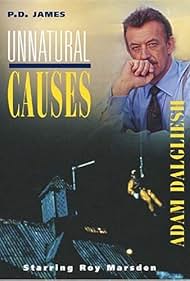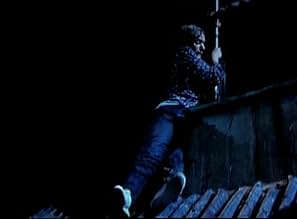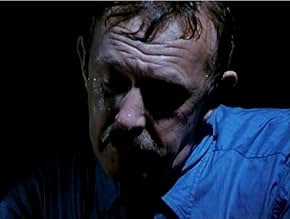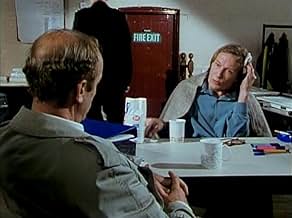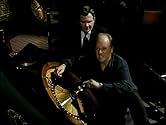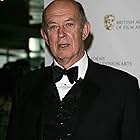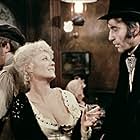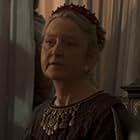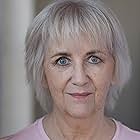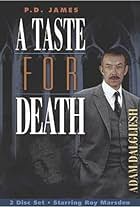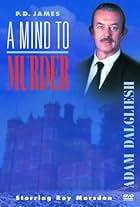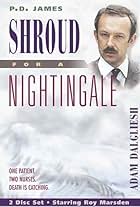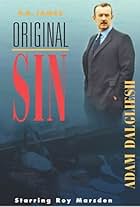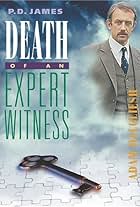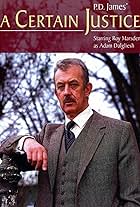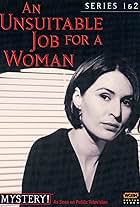Commander Dalgleish of Scotland Yard investigates the apparent murder of a well-known author who is found floating in a dinghy with his hands chopped off. The man, Maurice Seton, had recentl... Read allCommander Dalgleish of Scotland Yard investigates the apparent murder of a well-known author who is found floating in a dinghy with his hands chopped off. The man, Maurice Seton, had recently been ejected from a private club when he was caught photographing some of its members at... Read allCommander Dalgleish of Scotland Yard investigates the apparent murder of a well-known author who is found floating in a dinghy with his hands chopped off. The man, Maurice Seton, had recently been ejected from a private club when he was caught photographing some of its members at the gambling tables. The club had been under suspicion of laundering large amounts of cas... Read all
- Awards
- 1 nomination
- Director
- Writers
- All cast & crew
- Production, box office & more at IMDbPro
Storyline
Did you know
- TriviaAdam meets Celia in the church and gazes, with interest and pleasure, at the flying-angel roof bosses.
Although not unknown elsewhere, East Anglia possesses a remarkable concentration of churches in which these bosses are found; and Bylthburgh church (where this scene was filmed) is one of the most noted and exquisite examples of their use.
Adam's appreciation of the angels highlights his artistic tendencies and his affection for the art and landscape of East Anglia.
- GoofsThis novel was set in the 1960s. There would be no state of the art CCTV or other hi tech products during this era.
- ConnectionsFollowed by A Mind to Murder (1995)
To outline the premise, mystery novelist Maurice Seton is spotted in a casino in London taking photographs and notes of people at the gambling tables there. The owner, a shady character by the name of L. J. Luker, takes exception to this and has him ejected, only to find that he has gone off with the incriminating film. The next morning a boat comes bobbing to shore in Southwold in Suffolk with the said dead Seton, minus his hands, which has been mail ordered to Luker (nice to know at least the Post Office could do deliveries smoothly back then, though Luker is non too appreciative of this, unfortunately). If it was to prevent identification, why not remove the head? And why is he floating in a boat to begin with? I can't imagine he'd be doing much fishing without his hands. By sheer coincidence Dalgliesh is investigating Luker's shady deals with the Japanese and decides that as Seton was seen at the casino then there must be a connection and shoots down there to join the Suffolk police on the case. The police, led by Inspector Reckless (yes, really), are remarkably reasonable about this, but Dalgliesh is in for a shock when the toxicology report tells him the deceased died of a heart attack and that his hands were cut off hours later, making the case even more perplexing than it is already. Thing is, was his end met by the crooked casino boss, or is it the local residents who Dalgliesh must look for among the suspects, who all seemingly have reason to give him a Viking sendoff.
If I have made this sound intriguing, then sadly the result is less auspicious. The opening scenes involving the casino, with quick cuts to residents in Southwold watching literally critic Oliver Latham on the TV, make the opening 15/20 mins rather confusing at first, as you wonder just where the connection actually is between the seedy London casino and the seaside charm of Southwold and it's somewhat eccentric residents. It takes about half an hour before it settles down to become a reasonable murder mystery of what we are accustomed to, but it's running length is such that there is no build up to establish the characters or to set up the scene so we can know the victim better before he meets his demise. That was something of the appeal of the previous format of P. D. James mysteries and while the screenwriter would of struggled to make this stretch to 6 episodes, at least half would of been possible with some imagination. As it is we have a host of suspects whose characters range mainly from caricature to camp - yes, P. D. James' recurring theme of homosexuality in her novels pops up again (though no brother-sister relationships this time), though it isn't just the gay character who is camp in this. While James Cossins' character Justin Bryce is clearly gay, he is less camp than Bill Nighy's portrayal of literally critic Oliver Latham. Nighy, like so many of the cast, seems to go into theatrical mode here, and Cossins' waspish Bryce is far more nuanced than Nighy's foppish critic. Marjie Lawrence is not much better as Celia Calthorp, and while Simon Chandler is decent enough as Digby Seton, brother of the deceased who stands to inherit his brother's fortune if only he marries, and Anne Lambton is okay as the disabled Sylvia Kedge, she is a little overwrought at times. The only one who adds any freshness is Lucy Briers, here cast against type as the teenage Elizabeth Marley, whose youth and amusing demeanor adds vitality to proceedings and makes you regret that she was soon lumped into dowdy roles as plain Janes in such roles as Pride and Prejudice just a couple of years later.
Another strange edition is the reappearance of Mel Martin as Deborah Riscoe, who pops up here 8 years after her appearance in Cover Her Face, now dating Dalgliesh. What happened in those 8 years, where Dalgliesh in that time was also breaking off a relationship with Sheila Ruskin (in The Black Tower) and interested in Susannah York's character in Devises and Desires just two years ago? Has he been playing the lothario all this time? Surely not! And I can't imagine Deborah Riscoe would be so understanding as to settle for an "open relationship", so why now have the writers brought her back? It's not that Riscoe's presence isn't welcome, as Mel Martin at least gives a performance of depth and realism to proceedings, plus it's nice to see Dalgliesh so happy for much of this mystery. It's just smacks of laziness by the writers who seemed to think by just bringing back an old character would make viewers forget some of this adaptation's shortcomings. Instead it just feels odd, and an excuse to fill time on a somewhat sparse mystery by having Deborah becoming tired of Dalgliesh's commitment to the job (ah, that old chestnut) and giving him an ultimatum on just who he values more. I think I can guess where this is leading...
Once it gets past it's confusing opening it is not a bad mystery, and it does have a memorable climax where Dalgliesh finds himself trapped in a house during a storm that is quite spectacular. But it's feature length format just doesn't suit the P. D. James mysteries and gives no time or depth to establish things, while too many of the cast play for cheap caricatures rather than the more considered portrayals in the 1980's. And because of it's format, it loses one of the key ingredients in a P. D. James adaptation - the sense of atmosphere and foreboding. Despite there being three deaths, plus an attempt on another's life, you never feel fear for their lives - mainly because most of the characters are so theatrical as you couldn't really care about their fate. And when Dalgliesh finally discovers who the killer is, it is because one of the suspects tells him and the reason why, rather than Dalgliesh figuring it out for himself or discovering some clue. While it certainly isn't the worst of the P. D. James adaptations - that was soon to come with A Mind To Murder the following year - it's a sad reflection on how by trying to "modernize" a tried and trusted format for the 1990's the writers instead made it lose the thing that made P. D. James adaptations so absorbing in the 1980's; it's ability to involve audiences in proceedings and play detective throughout it's in-depth format. With this mystery, we are merely bystanders just watching on the sidelines as events flit by.
- gingerninjasz
- Aug 23, 2023
- Permalink
Details
- Release date
- Country of origin
- Language
- Also known as
- Mystiske omstendigheter
- Filming locations
- Holy Trinity church, Blythburgh, Suffolk, England, UK(Adam meets Celia in the church)
- Production companies
- See more company credits at IMDbPro
- Runtime1 hour 43 minutes
- Color
Contribute to this page

